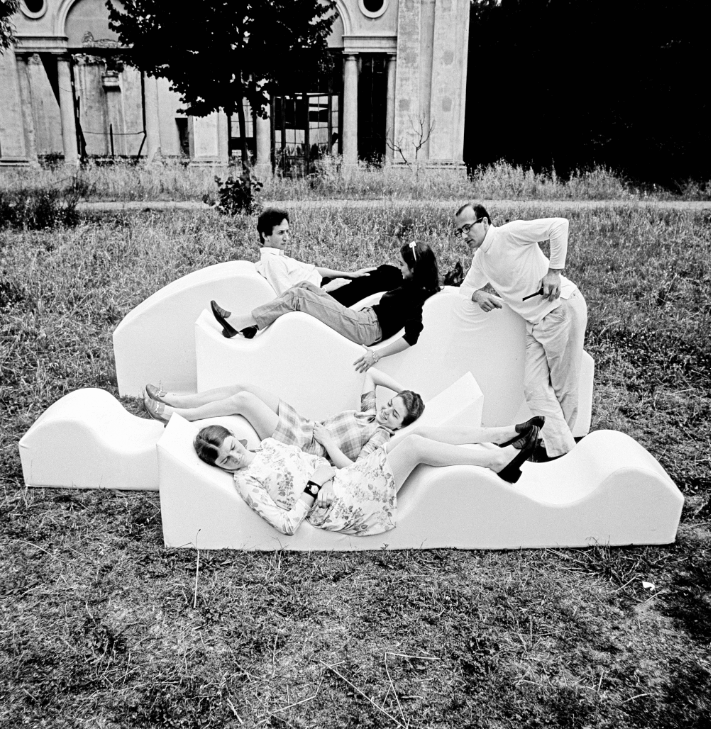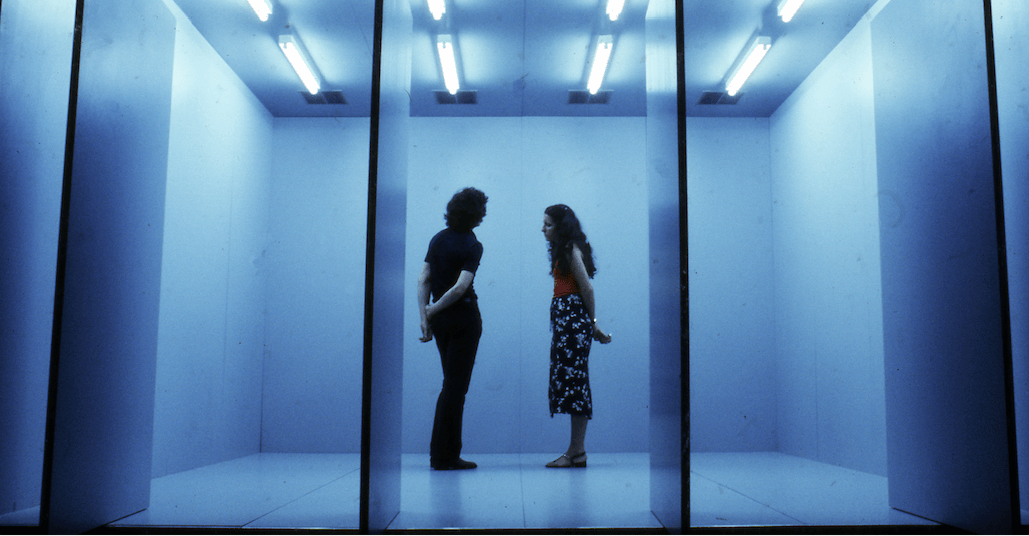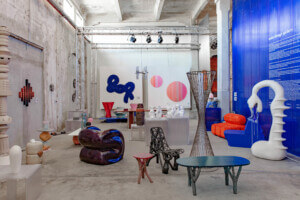One of the great heavyweights of Italian design, Andrea Branzi, passed away in the early morning on Sunday, October 9, just shy of his 85th birthday. Branzi was born in Florence where he studied architecture and went on to cofound Archizoom Associati, a visionary design collective that disbanded in 1974. Branzi left Florence and moved permanently to Milan around that same time. He had a hand in formulating the Radical design school Global Tools in 1973, and he went on to cofound, in 1982, the post-graduate design school Domus Academy. He joined Studio Alchimiea and later the Memphis Group, two extraordinarily creative Milan-based design collectives. Among the many accolades, Branzi was awarded the prestigious Compasso d’oro for a lifetime achievement.
It’s in Florence, however, where he gets his start. An opportunity arose to participate in an exhibition, and several schoolmates, all close friends, recognized the space could serve as a critical showcase. They broke into two groups, naming one Archizoom Associati and the other Superstudio. There is something revealing about these odd monikers that express the spirit of their generation: this was when pop-art, comic book superheroes and British-American rock were all the rage. Staged in the Jolly 2 gallery in Pistoia, the exhibit grew into a funky collection of original lamps, sofas, radio sets, enshrouded in rainbow colors. Pistoia may not have been a cultural hub like neighboring Florence, but the show nonetheless succeeded in drawing significant attention.
One of the design luminaries who dropped in to see the show was Ettore Sottsass Jr., who was in charge of Olivetti’s design office—Italy’s IBM—and who was also moonlighting at the time as art director at Poltronova, the furniture manufacturer based in nearby Agliana. It might have helped that Sergio Camilli, the director of Poltronova, was also very impressed by what he saw. The two picked up almost all the objects in the gallery for commercial production. Andrea Branzi along with the rest of the early Archizoom members Gilberto Corretti, Paolo Deganello and Massimo Morozzi made these experimental mock-ups using mostly cardboard, wood and lots of paint.

Yet this brings us to the crux of Archizoom’s strident ideology: these flimsy props were communicating something different, something anti-establishment, they were, as they would come to be known, anti-design statements. One particularly dysfunctional masterpiece was the Superonda (superwave), a sofa, that Poltronova began circulating in 1967. It has never gone out of production. The Superonda is made of two separate elements that take the form of waves.
Elisabetta Trincherini, who is the archivist and historian for Poltronova, told me that Camilli was determined to find a working solution to get the design into production, without compromising the original concept. The two independent forms, made of polyurethane and covered in vinyl, were readjusted so that they could fit snugly one into the other, creating a bed-like shape to lie on.
Having a Superonda of my own, I can testify that as a sofa it is in fact quite awkward to sit on, but nonetheless terribly fun. This I know because my young daughter has spent countless hours making all sorts of combinations with these two pieces of brilliantly colored foam: it’s by far her favorite thing in the entire house.
I met Andrea Branzi several times over the years, but most notably in 2008 at his former studio in the Bovisa district in Milan. The studio was light and airy, and it was full of designs and objects scattered across shelves and tabletops. I was there with Mark Wasiuta and Luca Molinari working on an exhibition on an exhibition that was featured at MoMA in 1972: Italy: The New Domestic Landscape, Achievements and Problems of Italian Design. It was one of MoMA’s first blockbusters, and Emilio Ambasz, the original curator, had been scouting around Italy to bring to New York the most provocative and expressive Italian designers he could find. The exhibit, as the title suggests, was an attempt to showcase a slew of contradictions that intriguingly beset the Italian design context.
That day at Branzi’s place, we found ourselves invited to a studio lunch: a simple pasta dish with walnut pesto. Later, I also ran into Andrea Branzi in New York at the MoMA opening in May of 1972. I had a small tape player with me and we recorded his comments. “I was sure that our work in the exhibition was not very well understood,” he said. To further his point, Branzi added: “I met with Frank Gehry while in New York, and he did not appreciate that we chose not to present a project.” In other words, the empty room, made up of a simple rectangular structure with four swivel door panels and a looped audio reel playing in the background did not make much of an impression on Gehry. This sort of unbounded emptiness, this kind of freedom to imagine without limits, is precisely what is so “Radical” about Branzi’s vision. Then again, the term Radical when referring to this generation of Italian designers was put forward by the renowned art critic Germano Celant right at this time. And Branzi was unquestionably one of Radical design’s most brilliant minds.

Andrea Branzi was a polemicist, an astute writer, magazine director and cherished educator, and of course, much more could be said about his highly critical, incredibly informed and entirely human approach to the world around him. A friend of his, Lapo Binazzi, the cofounder of another visionary 60s Florentine group, UFO, wrote on his facebook page following the news on Andrea Branzi’s death, that Branzi’s loss was huge. For Binazzi, Archizoom was equivalent to the Beatles, and Andrea Branzi resembled John Lennon. A heartfelt sentiment that many of us share right now.
Peter Lang is a curator, writer, and educator focusing on architecture and the arts; his latest exhibition, The Mimetic Observer: A Visual Reading on Dante’s Divine Comedy, opened in Rome in the spring of 2023.











